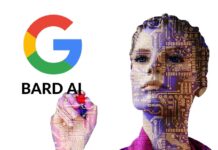
Blockchain provides a decentralized and transparent approach to managing digital transactions and information. Here we explore its core aspects such as definition, working principle, security features, and real-life applications. We also explore some limitations and drawbacks associated with this groundbreaking technology.
What is Blockchain?
Blockchain is an innovative technology that facilitates secure, transparent transactions without intermediaries using a distributed ledger system. Blockchain works like an unbroken chain of blocks containing transactions, time stamps, and a unique hash that links it to the previous block. This cryptographic hash ensures the immutability and integrity of stored information within the blockchain.
How Does Blockchain Work?
Blockchain functions through a series of fundamental components and processes:
1. Decentralized Ledger : The ledger is duplicated across all participating nodes, guaranteeing that each participant possesses an identical blockchain replica. This decentralized structure eliminates the necessity for a central authority and augments security.
2. Transaction Execution : Participants initiate transactions, which are then grouped into blocks. Each marketing undergoes verification to ensure authenticity, validity, and compliance with the blockchain’s defined protocols.
3. Consensus Mechanisms : Consensus mechanisms guarantee unanimous agreement among participants regarding transaction validity and the sequence in which they are incorporated into the blockchain. Popular consensus mechanisms include Proof of Work (PoW) and Proof of Stake (PoS).
4. Block Creation : Verified and agreed-upon transactions are added to blocks. Each block possesses a distinct identifier, a timestamp, and a reference to the preceding block, forming an orderly and chronological chain.
5. Cryptographic Techniques : Blockchain relies on cryptographic algorithms to safeguard transactions and preserve data integrity. Digital signatures, hash functions, and encryption methods ensure the obscurity of information stored within the blockchain.
Security of Blockchain
Blockchain technology boasts several security features that contribute to its robustness:
Immutability : Once a transaction is added to the blockchain, it becomes virtually impossible to alter. The decentralized nature of blockchain and the cryptographic hash linking each block ensures that modifying a single block would require changing all subsequent blocks, making it highly impractical and detectable.
Data Encryption : Blockchain employs encryption techniques to protect sensitive information. Transactions are secured with digital signatures, ensuring authenticity and preventing unauthorized access.
Distributed Consensus : The consensus mechanism within blockchain mandates that participants in the network reach an accord regarding the legitimacy of transactions. This collective consensus serves as a safeguard, preventing malicious entities from tampering with the blockchain unless they attain a majority agreement. This process fortifies the security of the blockchain by introducing an additional layer of protection.

Applications of Blockchain in Everyday Life
Financial Services :
worldwide acceptance of blockchain technology has brought in an era of transformation for the financial sector. Cryptocurrencies like Bitcoin and Ethereum revolutionized how we conduct secured and direct peer–to–peer transactions. This new approach cuts down on traditional intermediaries, such as banks, making financial services more effective and readily available.
Supply Chain Management :
Blockchain technology has found its place in enhancing supply chain management across various industries. Using blockchain’s decentralized and immutable nature, companies can track and verify product origin, movement, and authenticity. This transparency and traceability help combat counterfeiting and fraud and ensure ethical sourcing and fair trade practices.
Identity Verification and Digital Identity :
Blockchain offers a decentralized and secure framework for managing digital identities. Individuals can maintain control over their data by leveraging the blockchain’s cryptographic protocols, allowing for secure identity verification without relying on centralized authorities. Blockchain technology holds the potential to simplify processes like customer onboarding, access to digital services, and even voting systems.
Intellectual Property Protection :
Intellectual property rights can be safeguarded through blockchain technology. By storing records of copyrights, patents, and trademarks on a blockchain, creators can establish immutable proof of ownership and timestamp their creations. This decentralized approach ensures transparency and prevents unauthorized use or infringement of intellectual property.
Decentralized Content Sharing :
Blockchain technology could revolutionize the internet by creating protocols that are decentralized for sharing content. This peer-to-peer model eliminates the need for central platforms, allowing users greater control over their data and removing intermediaries that can limit access or alter content. It can enable fairer monetization models for content creators while maintaining privacy and security.
Energy Trading and Grid Management :
Blockchain facilitates efficient energy trading and management by enabling peer-to-peer transactions and data sharing in decentralized energy systems. It allows consumers to directly engage in energy trading, promoting renewable energy adoption and reducing reliance on traditional energy providers. Additionally, blockchain-based solutions can enhance grid management by enabling real-time monitoring, optimizing energy distribution, and ensuring transparency in transactions.
Healthcare and Medical Records :
Blockchain technology can revolutionize healthcare by securely storing and sharing medical records. It ensures patient privacy, enables interoperability between healthcare providers, reduces medical errors, and enhances data security. Blockchain-based systems can streamline processes like consent management, insurance claims, and drug supply chain management, ultimately improving patient care and outcomes.
Voting Systems :
Blockchain technology holds tremendous potential to revolutionize how elections are run by providing transparency, security, and auditability in electoral processes. Blockchain can even create a secure voting infrastructure, which increases trust in election processes.
These examples demonstrate how blockchain technology helps in everyday life. With its decentralized, secure, and transparent nature, blockchain has the potential to revolutionize multiple industries, empowering individuals and organizations.
Drawbacks of Blockchain Technology
While blockchain offers numerous advantages, it is essential to consider some of its limitations:
1. Scalability : Blockchain is facing difficulties in handling the volume of transactions. Establishing consensus among the network participants can be lengthy and time-consuming, limiting the speed and capacity of the blockchain network.
2. Energy Consumption : Some blockchain implementations, such as Bitcoin’s PoW consensus mechanism, consume significant energy. This aspect has raised concerns about the environmental impact of blockchain technology.
3. Regulatory and Legal Challenges : As blockchain disrupts traditional systems, it poses regulatory and legal challenges. The existing legal frameworks may need help adapting to blockchain technology’s decentralized and borderless nature, requiring new approaches to address jurisdictional issues and ensure compliance.
The impact of blockchain technology is ongoing as it continues to revolutionize diverse sectors, presenting a reliable, transparent, and decentralized method for managing digital transactions and information. With its vital security attributes, blockchain has been successfully integrated into fields like financial services, supply chain management, identity management, and healthcare, among various others. It is essential to recognize blockchain’s obstacles, including scalability, energy consumption, and regulatory complexities. However, despite these challenges, blockchain’s potential to reshape everyday life remains substantial, making it a technology worth monitoring as it progresses and matures.















